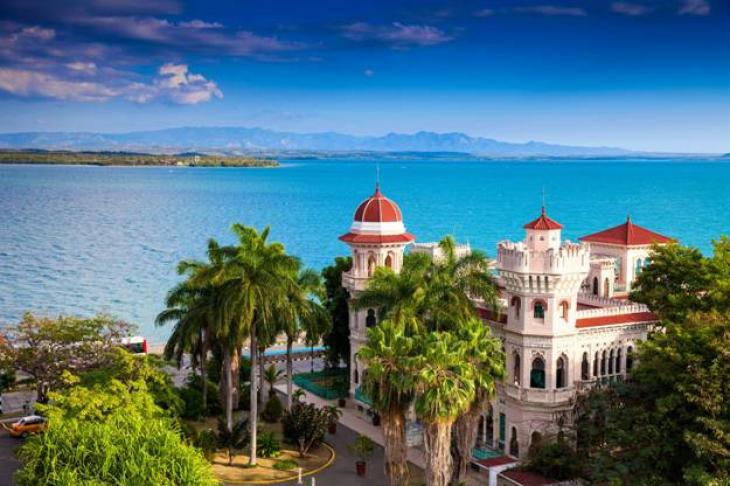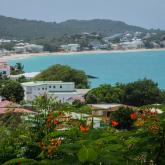
Martinique, an island nestled in the Caribbean Sea, offers a rich tapestry of natural beauty, cultural heritage, and vibrant traditions. Here’s an exploration of what makes Martinique a captivating destination.
Breathtaking Beaches
Martinique’s coastline is adorned with numerous beaches, each offering unique charm. From the serene shores of Les Salines to the secluded coves of Anse Dufour, visitors can bask in the sun, swim in crystal-clear waters, and enjoy the tranquil ambiance.
Cultural and Historical Landmarks
The island boasts several historical sites that reflect its colonial past and cultural evolution. Fort-de-France, the capital, is home to the Schoelcher Library, a masterpiece of Caribbean architecture, and the bustling Grand Marché, where local artisans and vendors offer a variety of goods. In the north, the town of Saint-Pierre, once known as the “Paris of the Caribbean,” features the ruins of the old theater and the Franck A. Perret Museum, providing insights into the island’s volcanic history.
Vibrant Festivals
Martinique comes alive during its numerous festivals. The Carnival, held annually before Lent, is a riot of colors, music, and dance, with participants donning elaborate costumes and masks. This celebration showcases the island’s rich cultural heritage and community spirit.
Natural Wonders
Dominating the northern landscape is Mont Pelée, an active volcano offering hiking opportunities for the adventurous. The island’s diverse flora and fauna are protected within its biosphere reserves, recognized by UNESCO, making it a haven for nature enthusiasts.
Culinary Delights
The island’s markets, especially the Grand Marché in Fort-de-France, are a feast for the senses. Here, visitors can sample local produce, spices, and traditional dishes, experiencing the rich flavors that define Martinican cuisine.
Artistic Expressions
Martinique’s cultural scene is vibrant, with numerous art galleries and craft markets showcasing local talent. Visitors can explore traditional Creole art, music, and dance, gaining a deeper appreciation for the island’s heritage.
Adventure and Exploration
For the adventurous, Martinique offers activities like hiking through tropical rainforests, exploring hidden waterfalls, and sailing along its picturesque coastlines. The island’s diverse landscapes cater to both thrill-seekers and those seeking tranquility.
Martinique seamlessly blends natural beauty with cultural richness, offering travelers a memorable and enriching experience.
Aruba, a gem in the Caribbean, is celebrated for its pristine beaches, diverse natural landscapes, rich cultural heritage, and vibrant festivals. Here’s a glimpse into what makes Aruba a captivating destination.
Sun-Kissed Beaches
Aruba’s coastline boasts some of the Caribbean’s most stunning beaches, characterized by powdery white sands and crystal-clear turquoise waters. Notably, Flamingo Beach on Renaissance Island is renowned for its resident flamingos, offering visitors a unique experience.
Natural Wonders
Beyond its beaches, Aruba offers remarkable natural attractions. The Ayo and Casibari Rock Formations provide intriguing landscapes for exploration, while the Natural Pool offers a secluded spot for swimming amidst rugged terrain.
Cultural Landmarks
Aruba’s history is rich and varied. Fort Zoutman, the island’s oldest structure dating back to the late 18th century, stands as a testament to its colonial past. Nearby, the Willem III Tower adds to the historical charm of Oranjestad, the capital city.
Festivals and Events
The island’s cultural calendar is vibrant, with events like the annual Carnival featuring lively parades, music, and dance. Additionally, festivals such as the Soul Beach Music Festival in May and The Dande Festival in December highlight Aruba’s rich cultural tapestry.
Culinary Delights
Aruban cuisine is a fusion of Caribbean flavors with Dutch and Indonesian influences. Visitors can indulge in dishes like Keshi Yena, a savory stuffed cheese, and Nasi Goreng, reflecting the island’s diverse heritage.
Adventure and Exploration
For the adventurous, Aruba offers activities such as windsurfing at Fisherman’s Huts, exploring the Arikok National Park’s diverse ecosystems, and hiking up the Hooiberg for panoramic island views.
Travel Tips
Aruba enjoys a dry climate, making it less susceptible to hurricanes. The island is also recognized as one of the safest in the Caribbean, with English widely spoken alongside Dutch, Spanish, and Papiamento.
Aruba seamlessly blends natural beauty, cultural richness, and recreational activities, ensuring a memorable experience for every traveler.
Cuba, the largest island in the Caribbean, is a destination that seamlessly blends rich history, vibrant culture, and stunning natural beauty. Here’s an exploration of what makes Cuba a captivating place to visit.
Historic Havana
Havana, the capital city, is a living museum of colonial architecture and lively streets. The UNESCO World Heritage site of Old Havana (Habana Vieja) features baroque mansions and ornate churches, reflecting the city’s storied past. Visitors can stroll along the Malecón, a seaside promenade, or explore the Museo Nacional de Bellas Artes de Cuba to appreciate Cuban art.
Charming Trinidad
The town of Trinidad, located in central Cuba, is known for its well-preserved colonial architecture and cobblestone streets. The Plaza Mayor is surrounded by colorful buildings that now house museums and art galleries, offering a glimpse into Cuba’s history and culture.
Natural Beauty of Viñales
Viñales Valley, in western Cuba, is renowned for its lush tobacco fields and dramatic limestone landscapes known as mogotes. The area offers opportunities for hiking, horseback riding, and exploring caves, providing a serene escape from urban life.
Cienfuegos: The Pearl of the South
Cienfuegos, a coastal city, is celebrated for its French-inspired architecture and vibrant arts scene. The Parque José Martí is a central gathering place, and the Palacio de Valle offers panoramic views of the city and sea.
Cuban Culture and Festivals
Cuba’s cultural scene is lively and diverse, with music and dance at its heart. The island hosts numerous festivals, such as the Havana International Jazz Festival and the Santiago de Cuba Carnival, where visitors can experience Afro-Cuban rhythms and vibrant parades.
Culinary Delights
Cuban cuisine is a fusion of Spanish, African, and Caribbean influences. Street markets and local eateries offer dishes like ropa vieja (shredded beef) and lechón asado (roast pork), providing a true taste of the island’s heritage.
Beaches of Varadero
Varadero, located on the Hicacos Peninsula, is known for its pristine beaches with white sands and clear waters. It’s an ideal spot for swimming, snorkeling, and enjoying the Caribbean sun.
Travel Tips
• Currency: Cuba operates on a dual currency system; it’s advisable to carry sufficient cash as credit cards may not be widely accepted.
• Transportation: Classic American cars are a common sight and can be rented for city tours, offering a nostalgic experience.
• Cultural Etiquette: Engaging with locals and respecting cultural norms enhances the travel experience. Learning a few Spanish phrases can be beneficial.
Cuba offers a unique blend of history, culture, and natural beauty, making it a destination worth exploring.
Cuba, the largest island in the Caribbean, is a destination that seamlessly blends rich history, vibrant culture, and stunning natural beauty. Here’s an exploration of what makes Cuba a captivating place to visit.
Historic Havana
Havana, the capital city, is a living museum of colonial architecture and lively streets. The UNESCO World Heritage site of Old Havana (Habana Vieja) features baroque mansions and ornate churches, reflecting the city’s storied past. Visitors can stroll along the Malecón, a seaside promenade, or explore the Museo Nacional de Bellas Artes de Cuba to appreciate Cuban art.
Charming Trinidad
The town of Trinidad, located in central Cuba, is known for its well-preserved colonial architecture and cobblestone streets. The Plaza Mayor is surrounded by colorful buildings that now house museums and art galleries, offering a glimpse into Cuba’s history and culture.
Natural Beauty of Viñales
Viñales Valley, in western Cuba, is renowned for its lush tobacco fields and dramatic limestone landscapes known as mogotes. The area offers opportunities for hiking, horseback riding, and exploring caves, providing a serene escape from urban life.
Cienfuegos: The Pearl of the South
Cienfuegos, a coastal city, is celebrated for its French-inspired architecture and vibrant arts scene. The Parque José Martí is a central gathering place, and the Palacio de Valle offers panoramic views of the city and sea.
Cuban Culture and Festivals
Cuba’s cultural scene is lively and diverse, with music and dance at its heart. The island hosts numerous festivals, such as the Havana International Jazz Festival and the Santiago de Cuba Carnival, where visitors can experience Afro-Cuban rhythms and vibrant parades.
Culinary Delights
Cuban cuisine is a fusion of Spanish, African, and Caribbean influences. Street markets and local eateries offer dishes like ropa vieja (shredded beef) and lechón asado (roast pork), providing a true taste of the island’s heritage.
Beaches of Varadero
Varadero, located on the Hicacos Peninsula, is known for its pristine beaches with white sands and clear waters. It’s an ideal spot for swimming, snorkeling, and enjoying the Caribbean sun.
Travel Tips
• Currency: Cuba operates on a dual currency system; it’s advisable to carry sufficient cash as credit cards may not be widely accepted.
• Transportation: Classic American cars are a common sight and can be rented for city tours, offering a nostalgic experience.
• Cultural Etiquette: Engaging with locals and respecting cultural norms enhances the travel experience. Learning a few Spanish phrases can be beneficial.
Cuba offers a unique blend of history, culture, and natural beauty, making it a destination worth exploring.




